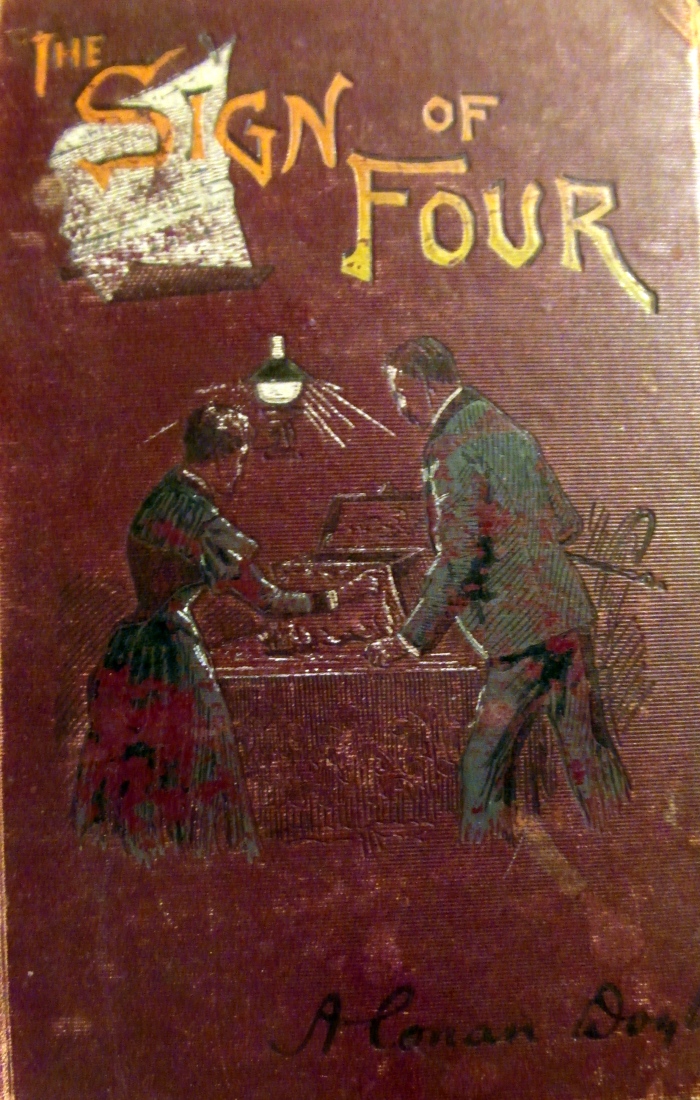 Originally published in Lipincott’s Monthly Magazine in 1890, The Sign of Four is the second of Arthur Conan Doyle’s novels to feature his most famous creation – Sherlock Holmes.
Originally published in Lipincott’s Monthly Magazine in 1890, The Sign of Four is the second of Arthur Conan Doyle’s novels to feature his most famous creation – Sherlock Holmes.
It provides a gentler, more human insight into its leading characters than many of the other Holmes stories. The books opens and closes with the great detective reaching for his bottle of cocaine – the only means he can find to switch off his ever restless mind. 

But, there is hope within the book too. Dr Watson meets his wife to be, and Holmes’ genius prevails once more, despite the toll the demands of his own brilliance exert on his own mental heath.
The edition I own of the work is much loved, but alas rather battered and bruised. The covers are loose, the colours faded, but such is the character of the book, and it’s design, that it shines through nonetheless.
Interestingly, the front cover itself doesn’t actually feature Sherlock. Instead, it depicts a scene involving Mary Morstan and Dr Watson, while literature’s most famous detective is relegated to appearing only on the book’s spine
Nevertheless, in his contemplative poise he remains resplendent his magnificent smoking jacket the envy of all.
I found the book peeking out from underneath a stack of less interesting tomes at a stall in Spitafield’s Market, in a moment of splendid serendipity. I have always been a great fan of Holmes, and have amassed something of a collection of Sherlockania that I hope to feature on this blog in the future.
Nevertheless, I do have some sympathy with Raymond Chandler’s quip that Holmes is “mostly an attitude and a few dozen lines of unforgettable dialogue.” Certainly, particularly in the later short stories, much of Conan Doyle’s efforts are clearly devoted to matters of plot. As a result I especially enjoy those books within the Holmes canon, where Conan Doyle takes the time to explore his own characters.
In this respect, it is in The Sign of Four and other early Holmes stories, when his character and that of Watson are still in the process of becoming, that the most enjoyment is to be found.